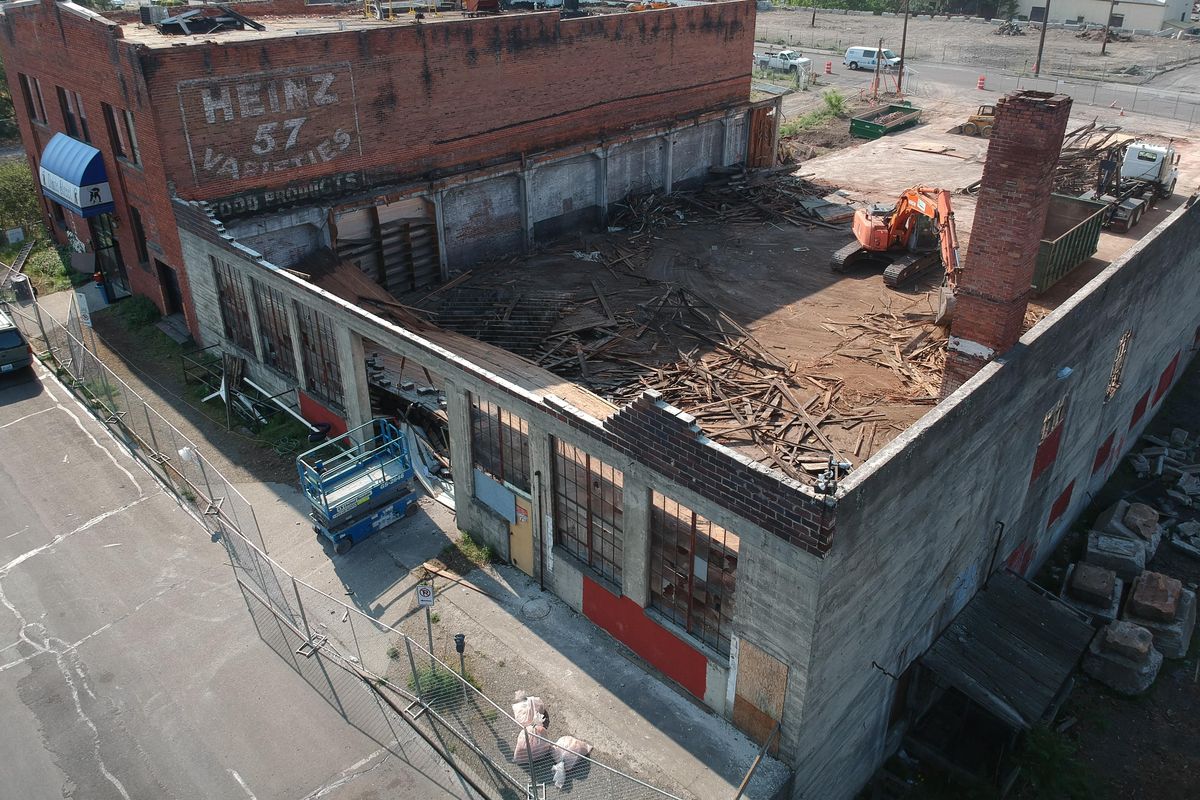Buildings’ demolition to make way for downtown Sportsplex

Demolition permits have been issued for two buildings on the north bank of the Spokane River in preparation for construction of a $42 million indoor sports complex.
The 105-year-old Carnation Dairy garage at 444 W. Cataldo Ave. and a 109-year-old building originally built to stable milk-delivery horses at 433 W. Dean Ave. will be razed for what’s called the Sportsplex, which is being developed by the Spokane Public Facilities District and Spokane Sports Commission.
The Sportsplex, plans for which were first unveiled in 2015, will be an 180,000-square-foot facility for non-professional, non-spectator sports. It is designed as a venue for a large variety of sports and will have a 200-meter, six-lane indoor hydraulic banked track, 17 volleyball courts, 10 basketball courts and 21 wrestling mats.
The facility will be owned and operated by the facilities district. The sports commission would handle the marketing, sales and scheduling. The project is separate from the outdoor high school football stadium voters turned down last year.
The Spokane Park Board also contributed to the project with plans to spend $650,000 for property acquisition. Spokane County commissioners devoted $25 million in bonds to help build the facility.
Construction will begin this year and be complete in 2021. Before construction, however, the site must be cleared. The Spokane Historic Preservation Office never sought to save the buildings. Instead, a review of their eligibility for preservation was required before a demolition permit could be issued because of the buildings’ ages.
The 15,000-square-foot dairy garage was built in 1914 and has been owned by the city of Spokane since 2000, when it acquired the land from what was previously known as Inland Northwest Dairies. The garage, originally the Auto Interurban Co. Garage, was deemed eligible for the Spokane Register of Historic Places by the Spokane Historic Landmarks Committee in February.
The garage was built in the early days of the automobile, and purchased that year by Herbert Hawley, owner of the Auto Interurban Co., which he founded in 1911 with two six-passenger cars that ran between Priest River and Priest Lake, Idaho, to connect with the Great Northern Railway. He made the building a maintenance and repair shop for his trucks and buses.

His company quickly grew. In 1922, it began ferrying people and goods between Spokane and Coeur d’Alene, and five years later began operation in the Colville valley, which was extended to Trail, B.C. Soon enough, the company ran passenger bus service between Spokane and Cheney, and “to all communities in the Spokane valley via Trent and Sprague avenues,” according to Hawley’s Spokesman-Review obituary in 1953, which noted the company averaged 150,000 miles and carried about 155,000 passengers each month.
Though the garage building is degraded, the commission said it represents “development of early motor vehicle and bus transportation in the Spokane Region. The company provided service and connections that were not possible by electric trolley, train, or other modes.”
The 10,000-square-foot horse stable, which most recently housed Dance Street Ballroom, was deemed ineligible for preservation because of the many changes to its facade. It was purchased by the Spokane Public Facilities District in February for $2.2 million. The facilities district operates the Spokane Arena, Convention Center and First Interstate Center for the Arts. Demolition of the building has been promised for years.
Demolition of the existing buildings is being done by Talisman Construction Services, of Spokane.